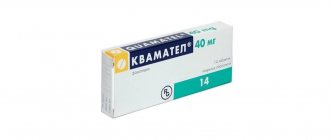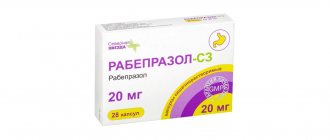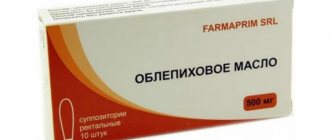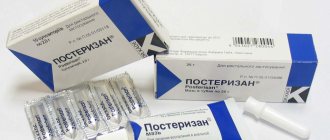Beneficial bacteria constantly live inside the vagina, which form the internal environment and provide local immunity. Under the influence of infectious processes, hormonal imbalances, as well as after childbirth or operations, the use of antibiotics, the microflora is disrupted. Balance can be restored in a few days or weeks. One of the effective remedies is Acylact suppositories.
Normal vaginal microflora
Throughout life, changes occur in the epithelium of a woman’s vagina that affect the composition of the natural flora. Three main groups of bacteria can be found on the mucous membrane:
- 1Oligate.
- 2Transient.
- 3Optional.
1.1. Obligate bacteria
Under normal conditions, they do not cause any diseases and help protect the vagina from pathogens. These are lactobacilli, bifidobacteria, Leptotrichia, Atopobium, Megasphaera.
Doderlein rods are a whole family of lactobacilli, among which the most common are L. acidophilus, L. brevis, L. plantarum, L. casei, L. cellobiosus, L. crispatus, L. jensenii and L. fermentum.
What they have in common is that they produce lactic acid from the glycogen of epithelial cells, which maintains the acidic reaction of vaginal secretions, and many of them also produce hydrogen peroxide, which suppresses the proliferation of pathogenic microorganisms.
At the same time, the following pattern was noticed: with normal microflora, about 60% of such rods produce hydrogen peroxide, in the case of a borderline state - less than 40%, and with severe dysbacteriosis - only about 5%.
Lactobacilli are found in 98-100% of smears with normal microflora.
1.2. Transient bacteria
This is the flora that enters the vagina from the outside, for example, when douching, inserting tampons, using sex toys, or during unprotected intercourse.
These microorganisms can be either harmless or pathogenic. Normally, they should make up no more than 3-5% of the vaginal microflora.
These include more than 20 species, among which the most common are G. vaginalis, Mobiluncus vibrios, and Candida yeast-like fungi.
Their number increases with bacterial vaginosis and other infectious diseases, thrush (candidiasis).
Yeast-like fungi can also occur normally. It is spoken of in cases where Candida albicans constitutes only a small part of the total number of microorganisms.
If the vaginal flora corresponds to the norm, but there is a proliferation of yeast-like fungi (>10 to the fourth power), then they speak of a conditionally normal variant and make a decision on treatment.
1.3. Facultative bacteria
They are usually present in small quantities. But if the balance is upset, when the acidity of the vagina shifts to a neutral or alkaline environment, they actively multiply and become the cause of dysbiosis (dysbacteriosis) and vulvovaginitis.
These are peptostreptococci, enterococci, corynobacteria, mycoplasma, vailornella, etc. Their number normally should not exceed 5-8%.
1.4. How does flora change throughout life?
As a rule, in the first hours after birth, the vagina in girls is sterile, but already in the first days lactobacilli, bifidobacteria and corynobacteria, as well as other bacteria inhabiting the intestines, including cocci, penetrate there.
There is a lot of maternal estrogens in the blood of a newborn, so vaginal cells create an acidic environment, accumulate glycogen and then break it down into lactate. The composition of the flora is close to that of healthy adult women.
After 21 days, maternal hormones are eliminated, which leads to changes in both the vaginal epithelium (it becomes thinner and the vaginal environment becomes neutral) and the microflora: cocci predominate, and the number of lactobacilli decreases.
At 9-12 years of age, the proportion of lactic acid streptococci and acidophilus bacteria increases. After the onset of menstruation, lactobacilli again become the dominant microorganisms.
During menopause, the level of estrogen in the body decreases again, which affects the state of the vaginal microflora: the total number of lacto- and bifidobacteria decreases, and the environment becomes neutral.
During pregnancy, as a result of hormonal changes in the body, the vaginal epithelium grows and the acidity of the secretion increases.
An acidic environment promotes the growth of normal flora and suppresses the growth of pathogenic flora. During this period, the number of lactobacilli increases 10 times, and the level of cervical colonization decreases.
In the vagina of a healthy woman, using modern molecular genetic methods, about 300 species of microorganisms are detected, but in practical medicine only a few dozen are used to diagnose dysbiosis.
Based on a simple smear on a woman’s flora, 4 types of biocenosis state are determined.
| Degree of vaginal cleanliness | Lactobacilli | Other bacteria | Cells | What does it correspond to? | When observed |
| 1 | Prevail | Absent or Gram-negative | Single leukocytes, “pure” epithelial cells | Norm | In healthy people |
| 2 | In moderate amounts or reduced | There are gram-positive and gram-negative | Monocytes, leukocytes, epithelial cells, macrophages | Intermediate type of microflora | In healthy people |
| 3 | Little or no quantity | Many gram-positive and negative, abundant coccal flora | Phenomena of incomplete phagocytosis in cells of the immune system | Dysbiosis | Bacterial vaginosis |
| 4 | Many macrophages, leukocytes, epithelial cells, phagocytosis phenomena | Inflammation | Vaginitis (colpitis) |
General recommendations
Suppositories should only be selected with a specialist. The drug can be used during pregnancy, lactation, or be prohibited. The absorption rate, concentration and type of active substance play a role. Gynecologists give the following recommendations:
- Suppositories can affect barrier contraceptives. If partners are not planning a pregnancy, then it is worth remembering that suppositories reduce the effectiveness of spermicidal contraception.
- The drug must be compatible with other medications that the woman takes during this period.
- When selecting an analogue, the initial characteristics, dosage, and contraindications are taken into account. It is helpful to review the list of side effects.
Properly selected suppositories for restoring microflora should be active, relieve unpleasant symptoms and cause minimal discomfort. If discomfort, burning or strong discharge appears, then this is a reason to contact a gynecologist to select a more suitable analogue.
Causes of dysbiosis
All causes of disturbances in the vaginal microflora are conventionally divided into 2 large groups - internal (endogenous) and externally acting (exogenous).
| Domestic | External |
| Imbalance of hormones, including tumors and various diseases of the endocrine and reproductive systems | Taking antibiotics, cytostatics and any other drugs that have a detrimental effect on lactobacilli |
| Childbirth, abortion, pregnancy | Frequent douching, microtraumas |
| Severe psycho-emotional or physical stress, including starvation, protein and vitamin deficiencies | Promiscuity and unprotected sex. Diseases transmitted primarily through sexual contact |
| Introduction of foreign bodies into the vagina or uterus: IUDs, vaginal tampons, pessaries, diaphragms, etc. | |
| Low level of personal hygiene, infection with dirty hands |
Under the influence of these factors, vaginal dysbiosis occurs:
- 1 Compensable , when changes in the smear are determined by laboratory tests , but the woman does not make any complaints or describe any symptoms.
- 2 Decompensated with local signs of inflammation of the vagina (vulvovaginitis).
- 3 Decompensated with a generalized inflammatory reaction (spread of infection through the bloodstream). It is rare, in patients with immunodeficiency (for example, against the background of HIV infection).
"Acilact" suppositories: indications for use
Vaginal suppositories are used as a primary or additional means of therapy to treat a number of pathologies:
- gynecological diseases that are accompanied by disturbances in the microflora of the female genitalia;
- vaginal dysbiosis;
- nonspecific colpitis;
- inflammatory pathologies of the genital organs in subacute and chronic forms;
- colpitis is atrophic and hormone-dependent.
The product is also used to prevent dysbacteriosis and complications of infectious processes during operations or childbirth.
How to restore vaginal microflora?
The main directions for restoring vaginal microflora are:
- 1Elimination of pathogenic microorganisms.
- 2 “Population” of the vaginal mucosa with representatives of natural microflora and creation of conditions for their life.
- 3Strengthening local and general immunity.
- 4Normalization of hormonal levels.
The first stage is carried out with the help of antimicrobial and antifungal agents, which can be prescribed locally in the form of suppositories, ovules or systemically (tablets, suspensions).
After eliminating the main manifestations and eliminating the symptoms of inflammation, drugs containing lacto- and bifidobacteria are prescribed (second stage).
It is important to understand that this group of drugs is at the stage of study and research.
As stated above, there are a huge number of species of lactobacilli, so two different women usually have different species. At the moment, it is impossible to colonize the mucous membranes with those lactobacilli that live in a particular woman.
Individual incompatibility can explain the symptoms of lactobacillosis, which often occur during the use of suppositories with lactic acid bacteria.
It is characterized by copious, watery discharge with a characteristic sour odor that frightens a woman.
In case of hormonal imbalances and decreased immunity (third stage), appropriate correction is carried out, which includes treatment of concomitant diseases, normalization of lifestyle and nutritional correction.
For sexually transmitted infections, both sexual partners (both women and men) undergo treatment.
Symptoms of bacterial vaginosis
With asymptomatic BV, there are no clinical signs and pathological changes are detected only during laboratory tests. However, the hidden course of the disease does not reduce its possible danger. This once again confirms the need to regularly visit a gynecologist for preventive examinations, even in the absence of complaints.
The severity of symptoms and their variability, if present, depend on the composition of the microflora and the general condition of the woman’s body.iv The most characteristic and often the only symptom of BV is profuse white or grayish discharge from the genital tract. The discharge smells unpleasant, and its odor may resemble the aroma of stale fish. This is due to the active functioning of anaerobic bacteria, which, during their life processes, release foul-smelling amines - organic compounds that are derivatives of ammonia.
Pathological discharge can be either abundant or scanty, appearing from time to time, which the woman often does not notice and thinks that everything is normal. The average amount of discharge during BV is approximately twenty milliliters per day, which is almost ten times the volume of natural discharge from the female genital tract. With a long course of BV, when the symptoms of the disease persist for several years, the discharge may become thicker. Their color may change to yellow or grey-green, and they may become foamy.
Other possible symptoms of bacterial vaginosis include a burning sensation, itching, difficulty urinating, and discomfort during and after sexual intercourse. As a rule, the manifestations of BV are closely related to the patient’s age, the presence of chronic diseases, the phase of her menstrual cycle and even her mental state. Frequent stress and mental trauma often lead to increased symptoms of the disease. Almost 40% of women experiencing BV also experience widespread pathological changes in the vaginal part of the cervix in the form of scars, erosions, cervicitis and ectropion - an unnatural inversion of the mucous membrane of the cervical canal into the vaginal cavity.
Medicines
To restore the balance of microflora, it is not enough to simply purchase the drug at the pharmacy and take it in a course.
It is important to receive complete treatment in several stages from a gynecologist with mandatory control smears both at the beginning and at the end of therapy.
4.1. Clindamycin
This is a broad-spectrum antibiotic that successfully works against opportunistic and pathogenic vaginal flora.
It allows you to significantly reduce its quantity and gives beneficial lactobacilli a chance to multiply. Contraindicated in the first trimester of pregnancy.
It has different trade names in the pharmacy chain and is available in the form:
- 1 candles – Klindacin, Dalatsin.
- 2 Kremov – Clindamycin, Dalatsin, Clindacin Prolong.
- 3 capsules for oral administration and solution for intramuscular administration.
4.2. Metronidazole
It is active not only against pathogens, but also against protozoa, for example, Trichomonas.
Contraindicated in the first trimester of pregnancy and while breastfeeding. List of release forms for the treatment of bacterial vaginosis:
- 1Suppositories – Mistol, Flagyl, Metronidazole, Metrovagin.
- 2Vaginal tablets – Trichopolum.
- 3Vaginal gels – Metrogyl.
- 4Tablets and capsules for oral administration – Metronidazole, Klion, etc.
- 5Combined drugs - Vagisept suppositories (metronidazole + fluconazole), Vagiferon (with the addition of interferons), Metromicon-Neo, Neo-Penotran (metronidazole + miconazole), vaginal tablets Klion-D (metronidazole + miconazole).
4.3. McMirror
Nifurantel actively destroys bacteria, protozoa and fungi. In combination with nystatin, which has an antifungal effect, its effectiveness increases even more.
In the pharmacy chain, the combination of nifurantel and nystatin is known as Macmiror Complex (these are soft vaginal capsules). The drug is widely used at the first stage of normalization of microflora. Contraindicated in the first trimester of pregnancy.
4.4. Terzhinan
These are vaginal tablets containing ternidazole, neomycin, nystatin and prednisolone.
Ternidazole and neomycin successfully destroy Gardnerella and other microorganisms that predominate in dysbiosis.
Thus, the drug changes the ratio in favor of beneficial lacto- and bifidobacteria. Nystatin has an effect on yeast fungi, and prednisolone eliminates the inflammatory response.
Terzhinan is indicated at the first stage of restoration of microflora in cases of bakvaginosis and vaginitis.
4.5. Antiseptics
Chlorhexidine has a detrimental effect on many bacteria, including gardnerella, chlamydia, bacteroides and others.
When applied topically, it is practically not absorbed into the blood and does not have a systemic effect.
For use in gynecology, chlorhexidine is available in the form of suppositories (Hexicon, Hexicon D) and combination preparations (Depantol suppositories - dexpanthenol + chlorhexidine), which can be used for treatment during pregnancy and lactation.
Fluomizin also has a similar effect.
Dequalinium chloride (the main active ingredient of the drug) is an antiseptic that is active against most gram-positive and gram-negative bacteria, fungi of the genus Candida and Trichomonas.
Polyvidone-iodine is a complex of iodine and polyvinylpyrrolidone, which has a detrimental effect on many pathogens, including yeast.
It is also used in the first stage of restoring the vaginal microflora. Povidone-iodine is often prescribed to prevent candidiasis.
The most common forms of release used in gynecology are Betadine and Iodoxide suppositories.
4.6. Clotrimazole
Has antibacterial and antifungal activity. Used to treat bacterial vaginosis and thrush. Contraindicated in the first trimester of pregnancy.
It has different release forms, of which the most often prescribed in gynecology are:
- 1Vaginal tablets – Candibene, Canesten, Clotrimazole.
- 2Gels, vaginal creams – Candide, Clofan.
- 3Combined suppositories – Vagiclin (clotrimazole + clindamycin), Clomegel (metronidazole + clotrimazole).
4.7. Natamycin
This is a natural antibiotic that has a detrimental effect on pathogenic fungi, including candida.
Its distinctive feature is the almost complete absence of allergic reactions. Can be used during pregnancy and breastfeeding.
Prescribed to restore microflora in cases of thrush, as well as mixed forms of dysbiosis.
In gynecology, its dosage forms are used in the form of pessaries (Natamycin) and vaginal suppositories (Pimafucin, Pimafungin).
4.8. Econazole
Prescribed for thrush and combined bacterial-fungal infection.
Contraindicated in the first trimester of pregnancy. Release forms - creams and suppositories (Gyno-Pevaril, Ekalin, Econazole, Ifenek).
How candles work
Suppositories on a natural and synthetic basis have the same principle of action. Under the influence of temperature, the suppositories in the vagina begin to melt. The active ingredients are released and reach the affected areas. Due to the rapid action, they may prescribe:
- before carrying out operations;
- before a caesarean section;
- for prevention;
- with vaginal dysbiosis;
- after systemic treatment with antibiotics;
- after operation.
In gynecology, suppositories with lactobacilli and bifidobacteria are used. They contain the correct concentration of components, act quickly, and have minimal impact on other systems and tissues of the body. The principle of action of suppositories is to stimulate local immunity and suppress pathogenic microflora. They create a comfortable environment for the development of beneficial bacteria.
Important! Often prescribed in combination with gels and tablets for vaginal use.
Separately, it is worth considering phytocandles, which have a gentle effect on the body. These include calendula flowers with a pronounced anti-inflammatory effect. The recovery process takes from 1 to 4 weeks, depending on the woman’s health condition and the presence of concomitant pathologies.
Lactobacilli and bifidobacteria
Lacto- and bifidobacteria increase the acidity of vaginal secretions, thereby inhibiting the growth of pathogenic flora.
Preparations containing lacto- and bifidobacteria are indicated only after improvement of health, elimination of inflammation and normalization of smears. But for thrush their use is limited.
Drugs from this list can restore vaginal microflora at the second stage of treatment:
- 1 Bifidumbacterin (contains bifidobacterium Bifidobacterium bifidum) . Prescribed in a course in the form of vaginal suppositories and orally (capsules, suspension). Duration is at least 14 days, sometimes up to 1-2 months.
- 2 Acylact (suppositories) . These are live acidophilic lactobacilli Lactobacterium acidophillum, which actively suppress coccal and other opportunistic flora. The drug is allowed during pregnancy, but is contraindicated for thrush, as it aggravates it.
- 3 Lactobacterin (vaginal suppositories + capsules for oral administration) . Contains live lactobacilli that produce lactic acid and inhibit the growth of pathogenic bacteria. Increases the body's protective properties; it is contraindicated for candidiasis.
- 4 Gynoflor E (vaginal tablets) . The drug contains lactobacilli and the hormone estriol, which improves epithelial function. Normalizes the vaginal microflora, including during menopause, when there is a lack of estrogen. Can be used after a course of treatment for thrush.
- 5 Ecofemin, Laktozhinal (vaginal capsules) . They also contain lactic acid bacteria, which normalize and maintain the physiological balance of vaginal microflora. Contraindicated for candidiasis.
- 6 Vaginorm S (suppositories for restoring the acidity of the environment) . The main active ingredient is ascorbic acid. Designed to normalize acidity, after which the balance of the flora can be restored without introducing additional bacteria. The drug is contraindicated for vaginal candidiasis. A common side effect is itching and burning; if they occur, further use of the drug must be stopped.
Pros and cons of using candles
Suppositories consist of a shell, active and auxiliary substances, created on a synthetic or natural basis. Depending on the amount of active ingredient, candles can be of different sizes. They come in cylindrical, rod-shaped, torpedo-shaped and round shapes. The benefits include:
- affect only local microflora;
- the fastest possible impact;
- minimum number of procedures;
- rapid relief of symptoms;
- easy to use.
The disadvantages of vaginal suppositories include the risk of an allergic reaction and special storage conditions. Drugs often have an extensive list of contraindications and restrictions. They often create discomfort when leaking. They help not only restore microflora, but also stop the development of pathogens, infections, and prevent the occurrence of inflammatory processes.
When choosing, be sure to study the composition for the presence of antibiotics, hormones, and antimycotics.
The gynecologist prescribes suppositories based on the clinical picture. If it is necessary to stop dysbiosis at the initial stage, then narrowly targeted suppositories are suitable. If prescribed for recovery from cystitis, thrush, vaginitis and other ailments, then preference is given to drugs with antibiotics.
Prevention of thrush recurrence
To restore the microflora after thrush, preventive courses of antifungal drugs are prescribed.
However, the most important factor in successful therapy is the combination of medications and adherence to lifestyle and diet recommendations.
As a rule, for candidiasis, suppositories, vaginal tablets containing fungicidal agents such as miconazole, clotrimazole, butoconazole, econazole, as well as combined agents - Terzhinan, Polygynax, Macmiror and others are used.
Fluconazole is used for systemic therapy; the course of therapy with this drug is shorter than with suppositories. Efficiency is comparable to vaginal forms.
Instructions for use of "Acilact" suppositories
Suppositories are used intravaginally, i.e. inserted directly into the vagina. The instructions are:
- Rinse the genitals thoroughly.
- Wash your hands with soap and dry.
- Remove the packaging from the suppository (only before administration).
- Lie on your back and insert the suppository as deeply as possible.
Take 1 or 2 suppositories per day, and the duration is 10 days. Then a break is taken for 10 or 20 days, after which the cycle is repeated if necessary. It is recommended to discuss the dosage and duration of therapy with your doctor.
Lifestyle
In order for the treatment of thrush or vaginal dysbiosis to be effective, you should definitely follow the recommendations to strengthen the immune system and prevent hormonal imbalance.
- 1Eat a balanced diet, get enough vitamins and proteins. Refuse aggressive diets (protein, Kremlin, and so on).
- 2Avoid increased psycho-emotional overload, nervous exhaustion, use restorative and relaxation techniques.
- 3Get enough sleep every day.
- 4 Maintain genital hygiene, wear clean underwear, wash yourself properly, and avoid douching at home without a doctor’s prescription.
- 5When using tampons and diaphragms, be sure to keep them clean.
- 6Abandon unprotected sex and promiscuity.
- 7Get rid of bad habits: smoking, drinking alcohol.
- 8Lead an active lifestyle, with daily exercise and gymnastics.
- 9Treat concomitant diseases, including gynecological ones, in a timely manner.
It is not possible to restore health or restore balance after thrush and taking antibiotics with folk remedies.








